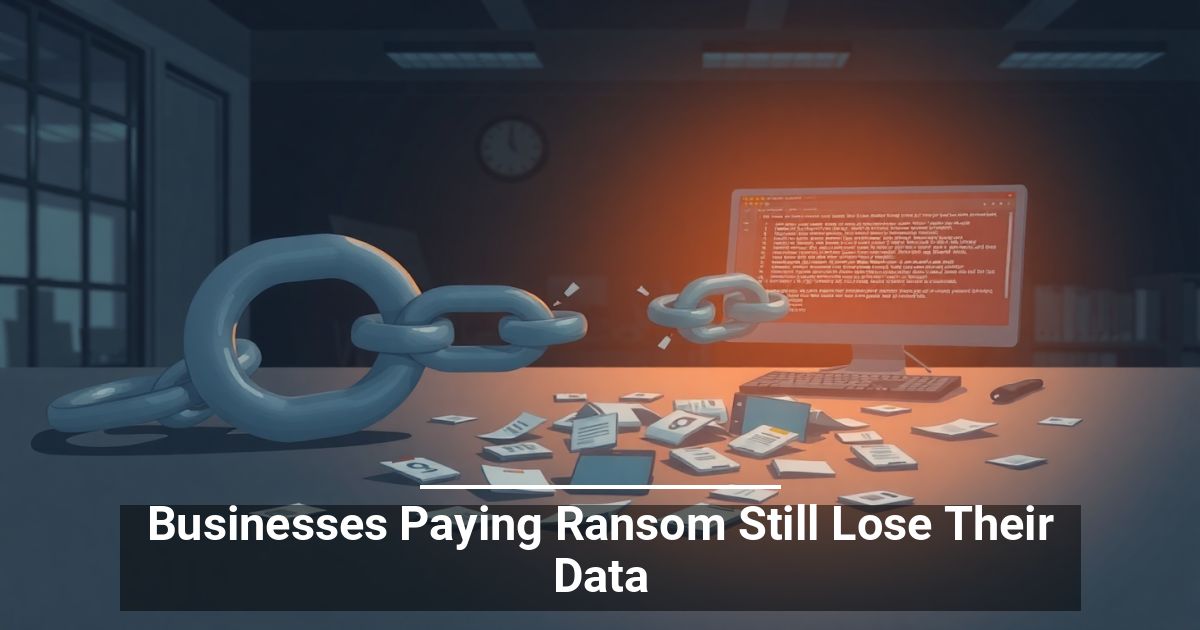 Few things cause a business owner to panic like ransomware. And when systems freeze, files lock, and the business grinds to a halt, paying the ransom feels like the only way out. But new research shows that paying up doesn’t guarantee anything, especially not the safe return of your data.
Few things cause a business owner to panic like ransomware. And when systems freeze, files lock, and the business grinds to a halt, paying the ransom feels like the only way out. But new research shows that paying up doesn’t guarantee anything, especially not the safe return of your data.
According to a 2024 survey from Veeam, ransomware data loss is worse than ever. Only one in three businesses (32%) that paid the ransom actually got their data back last year, compared with more than half (54%) in 2023. That’s a sobering drop, and a clear sign that cybercriminals are no longer keeping their end of the bargain.
Paying the Ransom Doesn’t Pay Off
For years, the business model for relying on ransom payments was straightforward: They’d encrypt your files, demand a fee, and (supposedly) hand over the decryption key once you met their payment demands.
But today’s reality looks much bleaker. Now, business owners commonly find that their data remains locked or corrupted even after making hefty ransom payments. Some attackers take the money and disappear, while others send faulty keys that fail to decrypt files. The result? Ransomware-related data loss and expensive downtime that incapacitate operations for weeks.
Paying the ransom can make you an easy mark for attacks in the future. Cybercriminals share information about companies that are willing to pay, putting you on a virtual target list.
More Companies Are Fighting Back
Despite the likelihood of permanent data loss to ransomware, the same Veeam report also found that the number of organizations recovering their data without paying ransom more than doubled between 2023 and 2024. Today, 30% of organizations that fall victim to ransomware attacks don’t hand over a dime but still retain their data.
Businesses are becoming more savvy about data recovery and cybersecurity breaches. They’re investing in immutable backups (copies that can’t be altered or deleted), cloud redundancy, and recovery plans that keep operations moving even during a cyberattack. Instead of surrendering to criminals, they’re regaining control and protecting themselves from the financial and reputational damage that comes with ransom payments.
Still, every locked server, encrypted file, and delayed project adds up to lost productivity, shaken client trust, and long-term financial strain. For many small- to mid-size businesses, the cost of business disruption far exceeds the ransom itself.
Protect Your Business Before It’s Too Late
Every business is a potential target, and it’s impossible to prevent every attack. However, companies minimize the fallout when hackers successfully steal your encrypted files.
The smartest defense is preparation. Begin by auditing your backup systems to guarantee that copies of important data are stored securely and offline. Train employees to recognize phishing attempts and regularly test your data recovery process so you’re not caught off guard when a real incident happens.
Refusing to play by the attackers’ rules will also help keep your company on track. Understand that paying the ransom doesn’t mean getting your data back. Investing in proactive cybersecurity and reliable data recovery strategies is the most effective way to protect your business from ransomware, data loss, and costly disruptions.



